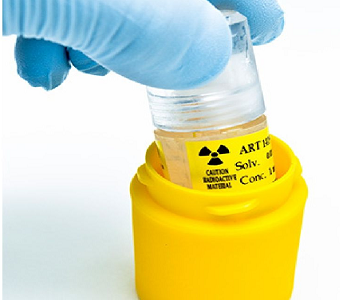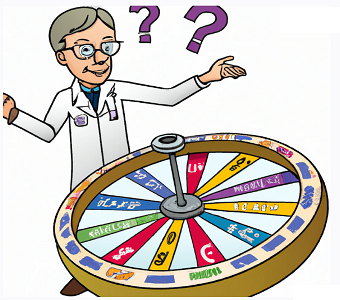Completing their IPO in September 2014 and raising $56 million, Affimed Therapeutics (AFMD) is a German clinical-stage biopharmaceutical company developing targeted cancer immunotherapies. Affimed’s product candidates are proprietary tetravalent antibodies called TandAbs, which are designed to redirect either natural killer (NK) or T cells against tumor cells in the body.
Affimed currently has two candidates in the clinic: AFM13, a TandAb NK cell “redirector” targeting CD30-positive cancer cells; and AFM11, a TandAb T-cell “redirector” targeting CD19-positive cancer cells.
The latter half of 2015 is shaping up as a significant period for Affimed, with early clinical data expected from both drug candidates. Below, we offer a synopsis and analysis of Affimed’s programs and explain why we like the name going into the second half of the year. As an early drug developer, AFMD is a risky bet, but we like that the stock hasn’t received much attention despite the growing attraction of bispecific antibodies; we think that can change in 2015.
TandAbs: Tetravalent Antibodies
Affimed’s existing TandAbs are designed to facilitate the redirection of immune cells to kill cancer cells via one of the following methods:
- TandAb with a pair of scFv domains targeting CD16A (expressed on NK cells) that redirect NK cells to kill cancer cells
- TandAb with a pair of scFv domains targeting CD3 (expressed on T-cells) to redirect T-cells to kill cancer cells
TandAbs are termed tetravalent antibodies because they contain 4 (tetra!) antigen-binding sites. TandAbs consist of four scFv antibodies, each potentially with its own distinct antigen target. Shown below, the potential for four binding sites is a key differentiator from other bispecific/multivalent antibodies, like Amgen’s (AMGN) BiTEs (Amgen video explainer) and Macrogenics’ (MGNX) DARTs (shown below) [1]. As mentioned, one of Affimed’s programs redirects NK cells, where other players focus solely on the use of T cells. There’s reason to believe that NK cells could prove superior to T cells in this setting because – among other reasons – existing redirectors require a suitable amount of immune cells in the tumor microenvironment; NK cells have been shown to be more prevalent in this compromised region. These differentiators combined with upcoming milestones and a low valuation compared to peers are central tenants to our view that AFMD is a name to know in the multivalent antibody space.

The NK cell-redirecting TandAb, AFM13
AFM13 is an NK cell-redirecting TandAb consisting of two scFv domains targeting CD16A (expressed on NK cells) and two scFv domains targeting CD30, which is over-expressed on certain types of cancer. Of course, CD30 is the target of Seattle Genetics’ (SGEN) approved antibody drug conjugate, Adcetris (brentuximab vedotin). With Adcetris, the antibody portion of the drug attaches to CD30 on the surface of malignant cells, delivering the toxin MMAE to the tumor cell, which is responsible for the product’s anti-tumor activity.
When AFM13 binds CD16A on a NK cell and CD30 on a cancer cell, the goal is to redirect the NK cell to attack the cancer cell – NK cell-mediated killing of the CD30+ cancer cell [2].
 AFM13 is currently in a phase IIa clinical trial enrolling patients with relapsed/refractory (r/r) Hodgkin’s Lymphoma (HL). Initial results from this study are expected in the 2nd half of 2015. AFM13’s clinical program is being funded partially by the Leukemia and Lymphoma Society.
AFM13 is currently in a phase IIa clinical trial enrolling patients with relapsed/refractory (r/r) Hodgkin’s Lymphoma (HL). Initial results from this study are expected in the 2nd half of 2015. AFM13’s clinical program is being funded partially by the Leukemia and Lymphoma Society.
AFM13 Phase I
AFM13 was previously tested in a phase I trial enrolling relapsed/refractory (r/r) CD30+ HL patients. Affimed presented final data from this trial at the American Society of Hematology Annual Meeting in December of 2014. This phase I trial (n=26 evaluable) was a standard dose-ranging study and tested AFM13 at doses of 0.01 – 7.0 [mg/kg].
Patients were administered AFM13 1x weekly for 4 weeks (n=5 opted for an optional second cycle). Affimed also explored a 2x weekly dosing regimen in 4 patients.
In subjects who received a dose >= 1.5 [mg/kg] (n=13), AFM13 demonstrated modest efficacy – 3/13 (23%) Partial Responses (below, C) [3].

Out of 7 patients who were refractory to Adcetris, 5 demonstrated no increase in tumor size (shown above, B). In addition, AFM13 was fairly well tolerated: the only Grade 3 AEs were pneumonia (n=4/28) and pyrexia (n=1/28) and a maximum tolerated dose (MTD) was not reached. AFM13 was considered safe and well tolerated at doses ≤ 7 [mg/kg]. AEs that occurred in more than 4 patients are shown below [3]. 
Already a Premium user? Sign In




